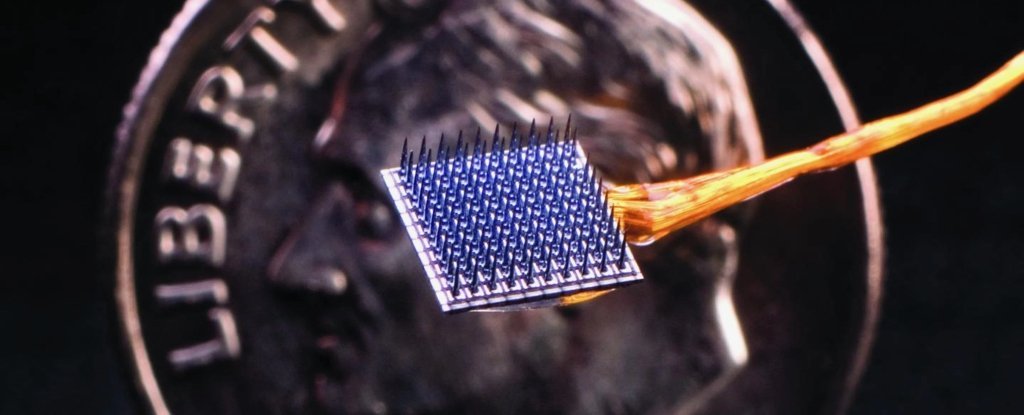Jeff Bezos, the richest person in the world, is set to join the astronaut club Tuesday on the first crewed launch by Blue Origin, another key moment in a big month for the fledgling space tourism industry.
The mission comes days after Virgin Galactic founder Richard Branson crossed the final frontier, narrowly besting the Amazon magnate in their battle of the billionaires.
Blue Origin’s sights are, however, set higher: both literally in terms of the altitude to which its reusable New Shepard craft will ascend compared to Virgin’s spaceplane, but also in its future ambitions.
Bezos founded Blue Origin back in 2000, with the goal of one day building floating space colonies with artificial gravity where millions of people will work and live.
 The New Shepard booster on the landing pad, 14 April 2021. (Blue Origin)
The New Shepard booster on the landing pad, 14 April 2021. (Blue Origin)
Today, the company is developing a heavy-lift orbital rocket called New Glenn and also a Moon lander it is hoping to contract to NASA under the Artemis program.
“They’ve had 15 successful New Shepard uncrewed flights and we’ve been waiting years to see when they’re going to start flying people,” Laura Forczyk, founder of space consulting firm Astralytical, told AFP, calling it an “exciting time” for enthusiasts.
How to watch
New Shepard will blast off at 8:00 am Central Time (1300 GMT) on July 20 from a remote facility in the west Texas desert called Launch Site One, some 25 miles (40 kilometers) north of the nearest town, Van Horn.
The event will be live streamed on BlueOrigin.com beginning an hour and a half before.
Richest, oldest and youngest
Joining Bezos on the fully autonomous flight will be barrier-breaking female aviator Wally Funk, who at 82 is set to be the oldest ever astronaut, Dutch teenager Oliver Daemen, the company’s first paying customer, who will become the youngest astronaut.
Rounding out the four-member crew is Jeff Bezos’ brother Mark, a financier who directs the Bezos Family Foundation and works as a volunteer firefighter.
The pair are best friends, and Jeff shared the moment he asked his younger sibling to join him in a viral video on Instagram last month.
Notably absent is the mysterious winner of a US$28 million auction for a seat, who had “scheduling conflicts” and will take part in a future flight, and has asked to remain anonymous, the company said.
After lift-off, New Shepard will accelerate towards space at speeds exceeding Mach 3 using a liquid hydrogen/liquid oxygen engine with no carbon emissions.
The capsule soon separates from its booster, and the astronauts unbuckle and begin to experience weightlessness.
The crew will spend a few minutes beyond the Karman line – the internationally recognized boundary between Earth’s atmosphere and space, at 62 miles altitude (100 kilometers), as the spacecraft peaks at 65 miles high (106 kilometers).
They will be able to admire the curvature of the planet – and the inky black of the rest of the universe – from large windows that comprise a third of the cabin’s surface area.
The booster returns autonomously to a landing pad just north of its launch site, while the capsule freefalls back to Earth before deploying three giant parachutes, and finally a thruster, to land gently in the west Texas desert.
Bigger prizes
Beyond the first flight, relatively little is known about Blue Origin’s future tourism plans.
The company has a history of secrecy, its existence only becoming public knowledge three years after its creation. It then pursued a policy of “self-imposed silence” until 2015.
Unlike Virgin Galactic, Blue Origin hasn’t officially started selling tickets – Daemen won his spot through the auction process. The company wants two more flights this year, then “many more” in 2022, it told AFP.
Forczyk, the analyst, said it will all depend on the level of demand that is generated by these early flights, and how well the industry recovers from accidents “which there inevitably will be, because spaceflight is inherently risky.”
Elon Musk‘s SpaceX will enter the fray in September with an all-civilian orbital expedition on its Crew Dragon, and is tying up with another company, Axiom, for visits to the International Space Station.
Beyond tourism, Blue Origin would like to supplant SpaceX as NASA’s leading private sector partner, and sees New Shepard as “sort of the stepping stone and also the way to make money along the way for the greater ambition,” said Forczyk.
Who’s who on Blue Origin’s first crewed flight:
Blue Origin’s maiden crewed flight on Tuesday involves four people who will cross the Karman line, which separates Earth’s atmosphere from space, for the very first time.
Here is a brief look at the quartet of soon-to-be astronauts.
The tycoon, Jeff Bezos
Jeff Bezos, 57, will leave behind the planet where he made his vast fortune for a few minutes on a spaceship built by the company he founded in 2000, when he was still merely a single-digit billionaire.
Six years before that, he started a small online bookstore called Amazon.com out of his garage. Bezos’ net worth is today estimated at more than $200 billion.
The brother, Mark Bezos
Jeff Bezos has invited along his brother Mark, a financier who directs the Bezos Family Foundation and works as a volunteer firefighter.
The pair are best friends, and Jeff shared the moment he surprised his sibling, six years his junior, by asking him to join the mission in a video that went viral on Instagram last month.
Trailblazer Wally Funk
At 82, barrier-breaking woman aviator Wally Funk is about to become the oldest ever astronaut, fulfilling a lifelong dream that was thwarted by the sexism of the early space era.
Funk, who took her first flying lesson aged nine, excelled in the Mercury 13 project which was intended to train women for space using the same standards as male astronauts, but the program was eventually nixed.
She nevertheless had an accomplished career in aviation, becoming the first female air safety investigator for the National Transportation Safety Board, and serving as chief pilot in several flight schools.
Dutch teen Oliver Daemen
Oliver Daemen, 18, is set to become the youngest astronaut. He holds a private pilot’s license and is a space enthusiast who will study physics in university this fall.
The Dutch teen is flying in place of the still anonymous winner of a $28 million public auction, who asked to pass this time because of “scheduling conflicts,” and will go on a later trip.
Daemen’s ticket was paid for by his father, the CEO of a private equity firm, CNBC reported.
© Agence France-Presse


 Local7 years ago
Local7 years ago
 Crime8 years ago
Crime8 years ago
 Local8 years ago
Local8 years ago
 Top Stories2 years ago
Top Stories2 years ago
 Crime8 years ago
Crime8 years ago
 Crime8 years ago
Crime8 years ago
 Sports10 months ago
Sports10 months ago
 Crime8 years ago
Crime8 years ago







You must be logged in to post a comment Login